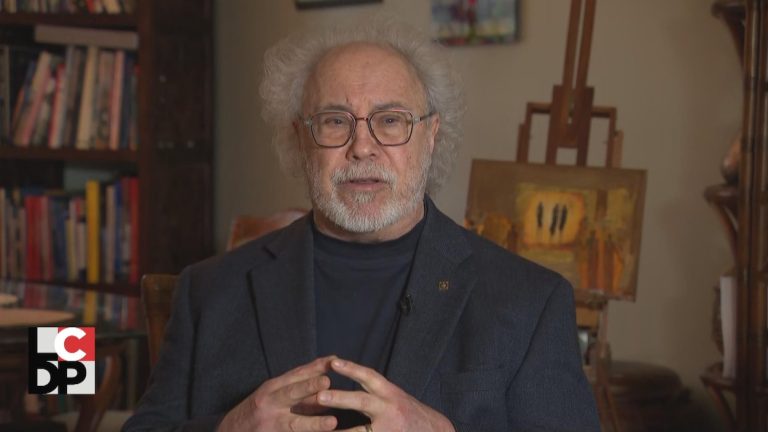

A flood of good news for the Government gives it breath to get through This “business” week has been exceptionally short on the currency front. However, although having achieved “milestones” such as the approval of the staff report with the Fund, the renewal of the Chinese swap, the green light for the Bases Law are good signs for the market, Investors are beginning to worry about what the next steps are.
The point that generates the most confusion these days is the continuity or not of the so-called “blend dollar”, the mixed exchange rate that allows exporters to settle 80% in the formal market and the remaining 20% in cash with settlement. In the staff report that the IMF announced this Monday, it is said that this special exchange rate would end at the end of the month a date that was not only agreed upon months ago by the organization, but was ratified several times with the Fund.
The proximity of the end of the blend dollar could serve to In the only two exchange rounds that there will be this week, agriculture will accelerate its liquidations, in a context of lower purchases by the Central Bank. Last week, for the first time in the Milei era, the organization ended with a neutral balance for its interventions in the MULC and on Friday the Central closed with a daily red of – US$ 137 million.
However, The Government is rushing to deny the end of the “blend dollar”“. Through his If the Bases law is approved, the reduction of the country tax is NOT associated with any devaluation. The current 80/20 or the 2% crawling will not be touched either.“.
Given the unfounded rumors, we clarify with Santiago Bausili that if the Bases law is approved, the reduction of the country tax is NOT associated with any devaluation.
The current 80/20 or the 2 pct crawling will not be touched either. @Kicker0024— totocaputo (@LuisCaputoAR) June 11, 2024
This Monday, the Secretary of Finance, Pablo Quirno, resurfaced the message and confirmed that, contrary to what the Fund says, both the scheme crawling peg at 2% monthly like the blend dollar they continue until the end of the year. The export dollar, which had benefited from the rise in cash with settlement, ended the week around $974, which implies a drop in real terms of more than 40% since the devaluation of last December.
The continuity of the blend dollar can serve to keep reserves at bay and motivate agricultural liquidations in a context where reserves cannot be replenished at the rate that the market and the Government would like. But in itself, it carries other risks. Economist Fernando Marull, from FM y Asociados, stated that the new expectation is that the Ministry of Economy extends the program at least one more quarter. “They have no reserves and they promised to continue with 2% and Blend. Moving forward with COUNTRY Tax reductions makes imports cheaper; And today there are no reservations; “In addition, the BCRA gives up US$1,300 million per month in Dollar-blend to supply the CCL.”
“We continue to think that the Plan is Follow-Follow until there are more reservations international; and today, the only one that can provide that is the IMF,” added Marull. At the consulting firm LCG they estimated that The “blend” dollar meant that the Central Bank received cash transfers for almost US$ 5 billion with settlement to maintain the “sweetener” for exporters.
In that sense, in a report presented by economists Melisa Sala and Javier Okseniuk, although the Government managed to reverse the dangerous dynamic of systematic loss of reserves that occurred until December, The accumulation of dollars in the Central this year would not have been “entirely genuine.”
“Another no less minor part of the accumulation process was determined by more circumstantial factors that add doubts about the sustainability of this process Looking ahead to the coming months: access to dollars for imports only in installments, the collapse of imports as a result of the marked recession, the increase in the country tax, and the non-payment of liabilities in dollars of the BCRA originated in the management previous”, they explained and added: “Correcting for these factors the accumulation of reserves in these months becomes spurious since they would have reflected a fall, “At the same time, there is still a stock of liabilities to be regularized in the following months.”
In addition to the difficult task of rebuilding reserves in the face of this new exchange context, Precisely the roadmap that the Government can take to begin to remove obstacles and correct distortions on this front is what worries investors and savers.
In the fund manager MegaQm they stated “The question and how to manage the trade off between achieving exchange rate advances that facilitate the agreement with the IMF (previous actions) and the need for fresh funds that the agreement may imply. One possibility is that they first move forward with a gradual release of the controls that today affect the operations of the financial dollar,” they noted in the “The biggest question is to know what this process can imply in terms of the exchange rate and its potential inflationary effect.“, they added.
For more latest and up to dated news, Visit https://baddiehub.news/ Now.






